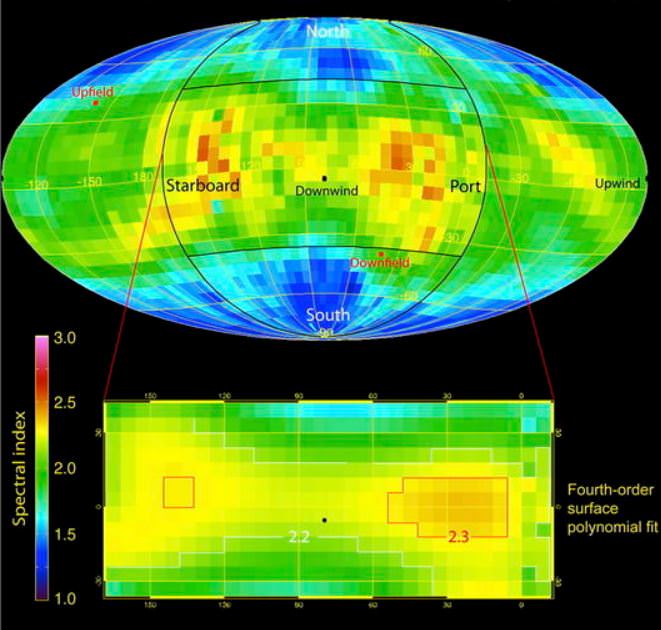Our Solar System is moving through interstellar space and scientists have long thought that the "bubble" around our Solar System – called the heliosphere – might have a tail, similar to how a comet has a tail or how other stars have astrospheres. But that has all been conjecture…. until now.
The IBEX spacecraft (Interstellar Boundary Explorer) has now seen the tail and has mapped out its structure. IBEX scientists were surprised to see the tail has twists and turns, with four separate "lobes," making it appear somewhat like a four-leaf clover. This downwind region of the heliosphere is called the heliotail.
"Scientists have always presumed that the heliosphere had a tail," said Eric Christian, IBEX mission scientist, speaking during a Google+ Hangout announcing the new findings. "But this is actually the first real data that we have to give us the shape of the tail."
IBEX measures the neutral particles created by collisions at the solar system's boundaries. This technique, called energetic neutral atom imaging, relies on the fact that the paths of neutral particles are not affected by the solar magnetic field. Instead, the particles travel in a straight line from collision to IBEX. Consequently, observing where the neutral particles came from describes what is going on in these distant regions.
"By collecting these energetic neutral atoms, IBEX provides maps of the original charged particles," said David McComas, lead author on the team's paper and principal investigator for IBEX at Southwest Research Institute. "The structures in the heliotail are invisible to our eyes, but we can use this trick to remotely image the outermost regions of our heliosphere."
What they found was unexpected, McComas said.
"By very carefully assembling the statistical observations from the first three years of IBEX data we've been able to fill in what we couldn't see before," McComas said during the Hangout, "and what we found was that the heliotail was a much larger structure with a much more interesting configuration.
What they found was a tail that appears to have a combination of fast and slow moving particles. There are two lobes of slower particles on the sides, with faster particles above and below. The entire structure is twisted from the pushing and pulling of magnetic fields outside the solar system. McComas likened it to a how a beach ball might twist around if it was attached to a bungee cord.
[caption id="attachment_103427" align="aligncenter" width="570"]
Our heliosphere. Credit: IBEX Team/Adler Planetarium[/caption]
The IBEX scientists speaking during the Hangout today said this new information will help us understand what the Voyager spacecraft may encounter as they reach the edge of our Solar System.
"IBEX and Voyager are incredibly complimentary missions," said Christian. "I've often said that IBEX is like an MRI, where it can take an image to understand the big picture of what is going on, where the Voyagers are like biopsies, where we can see what is going on in the local area."
This was the first time a NASA used a Google+ Hangout to broadcast a press briefing. You can watch the full Hangout below:
You can read David McComas' blog post on the new findings
here
, and NASA's press release
here.
 Universe Today
Universe Today
